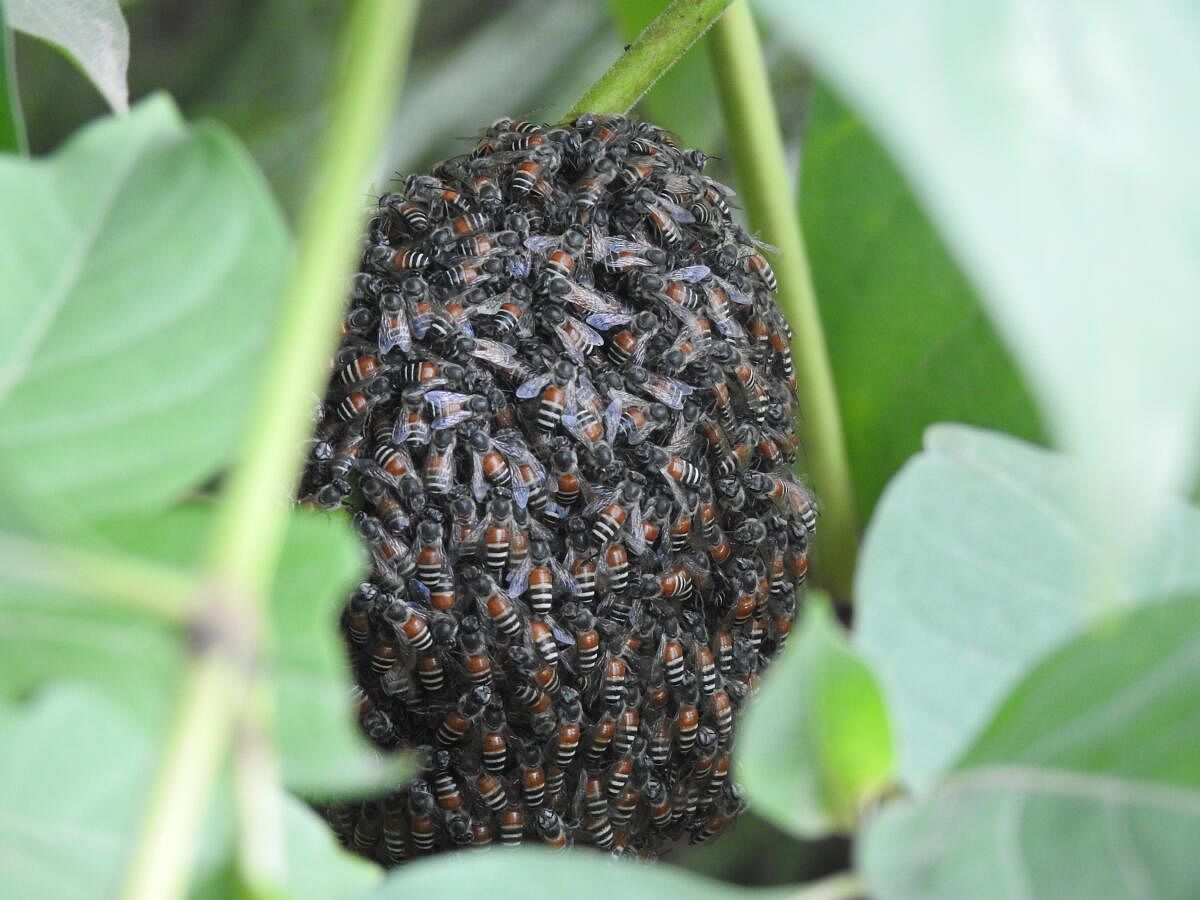
World Bee Day is celebrated on May 20 each year. Three summers ago, around the same time, I got my first taste of wild honey from a honeycomb in Navilu Kaadu. Our helpers chanced upon the little hive while clearing weeds by the walking path. One of them promptly snapped the slim branch with the hive and brought it to the cottage.
“You shouldn’t have disturbed the hive," I told him. “This is the comb of Kaddi Jenu. Their honey is medicinal. We give it to our children for good health," he replied in puzzlement. Our early years at Navilu Kaadu were all about reinforcing the habit of non-intrusion around wild creatures among farmhands.
I turned my attention to the blimp-shaped hive, squeezed the amber liquid out and spooned a little into my mouth. The sublime flavour was a sensorial treat.
What goes into the making of this ambrosial potion? A spot of morning dew sliding off tender mango leaves, a strand of wispy mist from over a lofty mountain, scented forest air from deep inside the woods, a drizzle of ice crystals from a feathery cirrus cloud, a thimble of wildflower juice, all swirled in nicely with the sweet song of a lark…
The master concocter of the divine elixir flitted about on the honeycomb — the red dwarf honeybee (Apis florea). This cute bee gets its name from its diminutive size and abdomen the shade of russet, with striking black and white bands. Worker bees average between 7-10 mm in size.
Red dwarf honeybees are small wild bees that pollinate plenty of tropical plants and agricultural crops in Southern and Southeastern Asia. Unlike the solitary leafcutter bees and carpenter bees that graced my previous columns, the red dwarf honeybees are social bees.
These wild bees together with their sister species, the black dwarf honeybees (Apis adreniformis) are said to be the most plesiomorphic or primitive of all bee species.
They build rudimentary nests consisting of a single exposed comb of about 10 to 15 cm, along slender low-hanging branches or twigs within bushes and hedges, hence their Kannada name Kaddi Jenu. In a behaviour unique to their species, the red dwarf honeybees salvage and recycle wax from their old hive when building a new nest, if situated within 200 metres.
The colony produces just half a kilo of honey in a year. Life within the colony revolves around a queen as with other social bees. And like other social bees, these bees too use dance to communicate with their colony-mates about food sources, and potential nesting sites. However, the dance of a foraging red dwarf honeybee is just an elementary straight dash in the direction of the nectar or pollen source, unlike the more nuanced waggle dance or the figure-eight dance of larger social bees.
These bees derive a consensus on new nesting sites based on the largest number of bees boogying in the direction of a potential nesting site.
Once they build the nest, they guard them against predatory insects, especially weaver ants, by daubing rings of ‘propolis’ a sticky resinous substance made from bee wax, saliva, bee enzyme and plant sap, on branches leading to the hive. One can call this a bee version of a moat around a fort.
The red dwarf honeybees also use ‘piping’ as a defence mechanism. An individual bee makes a piping noise to alert the colony of a potential threat, and in a split second, the other bees begin ‘hissing’ by flapping their wings lightly.
We have since spotted a few more red dwarf honeybee colonies in Navilu Kaadu. Over time, I have come to admire these plucky minimalists of the bee world.
Red dwarf honeybees aren’t into grand hives or formidable bee metropolises; their modest combs are built from salvaged wax, and yet they produce healing nectar. What’s more, they pipe away in the face of danger and use the boogie bulletin to tip off their brethren about sumptuous bee buffets and prime bee real estate.
Wouldn’t it be cool if a song and a dance could settle matters among humans too?
I hope you enjoyed getting to know some of the bee species that call Navilu Kaadu home, as much as I relished writing this three-part bee series.
Rooting For Nature is a monthly column on an off-kilter urban family’s trysts with nature on a natural farm.
The author chipped away at a software marketing career before shifting gears to independent consulting and natural farming. She posts as @ramyacoushik on Instagram. Reach her at bluejaydiaries@gmail.com